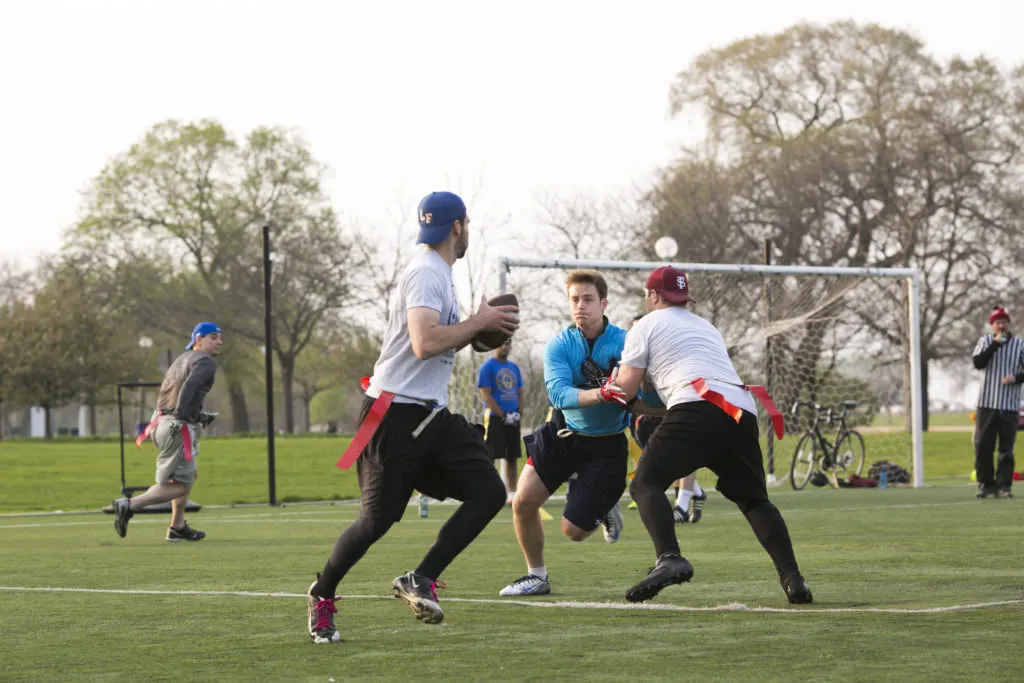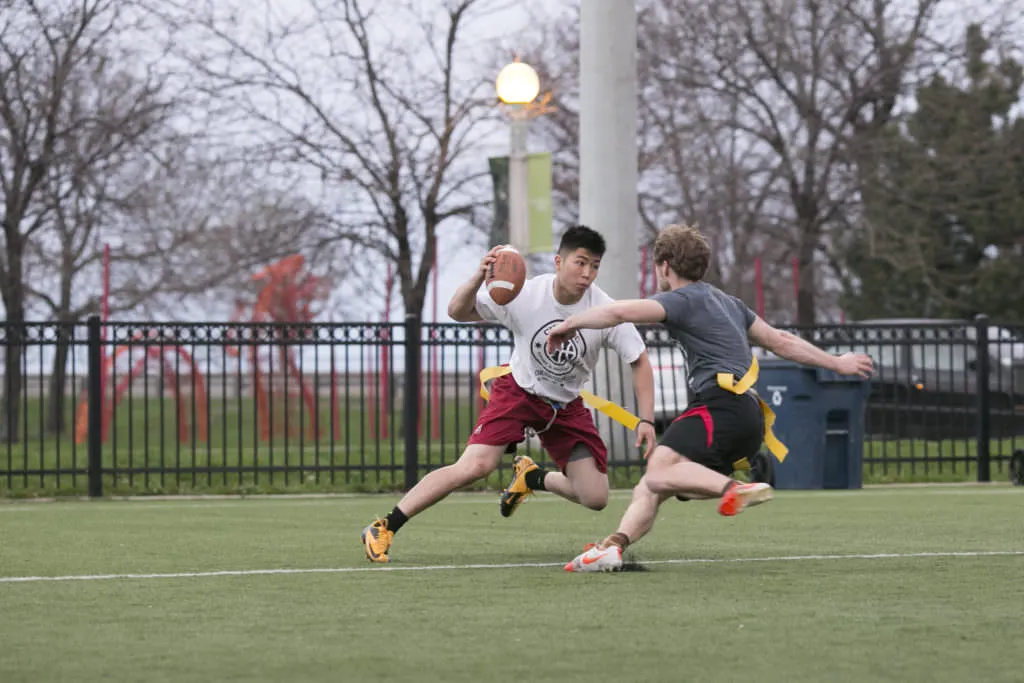Across the United States, a silent revolution in community recreation is underway. Flag football and volleyball—once seen as schoolyard sports or casual weekend hobbies—have exploded in popularity among adults of all ages, especially millennials and Gen Z. The driving force?mental well-being, social interaction, and the desire for busy lives free from intense competition.In major cities and suburban regions alike, social leagues are booming. What was once a niche scene of post-work pickup games has become a multi-billion-dollar wellness ecosystem—blending physical fitness with real-world socializing in an age where screen fatigue, isolation, and remote work have taken a toll.
📈 The Rise of Recreational Sports in 2025
This resurgence isn’t just about fun—it’s a response to changing social patterns. With many young professionals facing the challenges of hybrid work, economic anxiety, and digital burnout, structured, casual team sports offer a kind of “third place”: not work, not home, but a space to reconnect, sweat, and belong.
According to a 2025 report by the National Social Sports Alliance:
- Adult flag football registrations have risen 48% since 2022.
- Volleyball participation—especially in beach and coed formats—is up 62% nationwide.
- Social sports leagues now operate in all 50 states, with over 8 million active members.
Cities like Austin, Denver, Chicago, and Raleigh are seeing waitlists for local leagues, particularly among adults aged 25–45.
🧠 Why These Sports?
Flag football and volleyball are succeeding where other fitness trends fade because they are:
- Accessible: You don’t need to be an expert or fit a specific body type.
- Team-oriented: Encouraging connection over solo competition.
- Low-cost: Many leagues require minimal gear or membership fees.
- Flexible: Available in coed, competitive, and recreational levels.
For many, these games offer structure, exercise, and play—something often lost in adult life.
🏈 Flag Football’s Inclusive Surge
Once primarily played by youth or in intramural college settings, flag football has made major strides toward becoming a staple of adult rec leagues. The NFL’s push for flag football, including making it an Olympic sport in 2028, has given the game national momentum.
What’s unique in 2025 is how inclusive and gender-balanced the sport has become. Coed leagues are the most popular format, with many games requiring mixed-gender teams and rules that elevate inclusivity (e.g., bonus points for female touchdowns or mixed-pass completions).
Local leagues like ZogSports, Volo, and Underdog Sports report that 40–50% of players are women, and many are first-time players.

🏐 Volleyball’s All-Weather Appeal
Beach volleyball has long held appeal on coasts, but its indoor cousin is thriving too. In cities across the Midwest and Northeast, gymnasiums and recreation centers are booked solid for league nights.
Why the boom? Volleyball is:
- Fast-paced and social, requiring constant communication.
- Non-contact, making it ideal for all fitness levels.
- Easy to scale to small-sided formats like 4v4 or 6v6.
In 2025, volleyball is no longer seen as a school sport but a vibrant way for adults to maintain cardio health, coordination, and community ties. Pick-up games at parks and meet-up courts have become central features of urban outdoor life.
👫 Building Friendships, Not Just Fitness
One of the strongest drivers of this trend is social connection. In a world where loneliness is a growing health concern (especially post-pandemic), organized rec sports offer:
- Built-in friendship circles
- Regular weekly meetups
- Social gatherings after games, such as weekend competitions, bar meetups, and happy hours
Players often describe joining a team as the start of a new social chapter—a way to meet friends, roommates, even romantic partners.
Social leagues also provide as onboarding platforms for immigrants wishing to assimilate into cities that are seeing population increase and migration.
💼 Corporate and Wellness Integration
Companies have begun supporting employee teams in social leagues as part of workplace wellness initiatives after seeing the positive effects that physical play has on mental health.. Team sports are viewed as a tool for:
- Reducing stress and burnout
- Fostering teamwork across departments
- Creating loyalty and retention among staff
Remote-first startups, in particular, use league participation to offer in-person engagement opportunities for scattered teams.
🌐 Technology Enhancing the League Experience
In 2025, league management is powered by AI-based scheduling, score tracking, and community-building apps. Users get:
- Automated game reminders
- Team chats
- Video highlight reels
- Post-game social invites
This tech integration has reduced the friction of organizing games and boosted player retention. Some leagues even offer fitness tracking integrations with wearables for personalized progress reports.
🎯 Challenges & What’s Next
While the boom is undeniable, leagues face growing pains:
- Field and gym shortages in fast-growing cities
- Inclusivity barriers for nonbinary or disabled players
- Rising demand for childcare and family-inclusive games
Still, the outlook remains strong. With the 2028 Olympics set to showcase flag football and volleyball globally, these grassroots leagues could evolve into semi-pro platforms or pipelines for talent.
✅ Conclusion
In 2025, adult flag football and volleyball are no longer just sports—they’re community rituals, mental health strategies, and social wellness movements. As Americans continue seeking purpose, play, and connection in uncertain times, these team-based, accessible games are giving them new fields on which to thrive.
AQs: Flag Football & Volleyball Social League Boom in 2025
1. What are social sports leagues?
Social sports leagues are recreational athletic organizations that focus on fun, community, and inclusivity rather than serious competition. Players often join to meet new people, stay active, and unwind.
2. Who participates in these leagues?
Most participants are aged 22–45, but leagues are expanding to include teens, seniors, and families. Many leagues welcome all skill levels and offer beginner-friendly divisions.
3. Do I need experience to join?
No! Most leagues are beginner-friendly and emphasize learning and community over performance. Coaches and captains help new players adjust.
4. How much does it cost to join a team?
Costs vary by city and league. Typically, players pay $50–$120 per season (6–10 weeks), including shirts, equipment use, and sometimes post-game socials.
5. What’s the difference between recreational and competitive divisions?
Recreational divisions focus on fun and inclusivity. Competitive divisions are for players with prior experience or athletic background and usually follow stricter rules and rankings.







